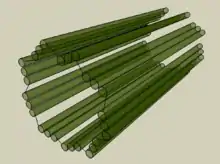Overview

Every animal cell has two small organells called centrioles. Centrioles help the cell when it comes time to divide. Mitosis and meiosis both have centrioles involved in. A centriole is a small set of microtubules arranged in a specific way. Also, there are nine groups of microtubles. The centrioles are found in pairs and move towards the poles of the nucleus when it is time for cell division. During interphase, the cell is at rest. The centrioles move to opposite ends of the nucleus and a mitotic spindle of threads begins to appear during prophase.
Centrioles are cylindrical structures that composed of groupings of microtubules arranged in 9+3 pattern. They are usually exist in pairs that form centrosomes. Centrioles are found in animal cells and play a big role in cell division. While cell division, the centrosome divides and the centrioles replicate (make new copies). The result is two centrosomes, each with its own pair of centrioles. The two centrosomes move to opposite ends of the nucleus, and from each centrosome, microtubules grow into a "spindle" which is responsible for separating replicated chromosomes into the two daughter cells. Centrioles contain delta-tubulin, a protein which is part of the structure of tubulin. Centrioles are barrel-shaped organelles that are found in most eukaryotic cells, with the exception of vascular plants and fungi. Centrioles consist of nine triplets of microtubules and are involved in the mitotic spindling, as well as when the cytoplasm of a eukaryotic cell split to form two daughter cells.